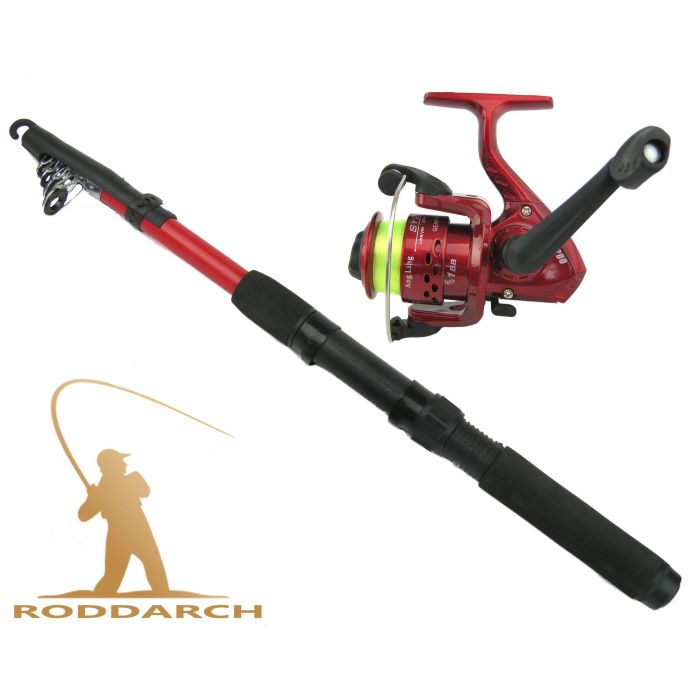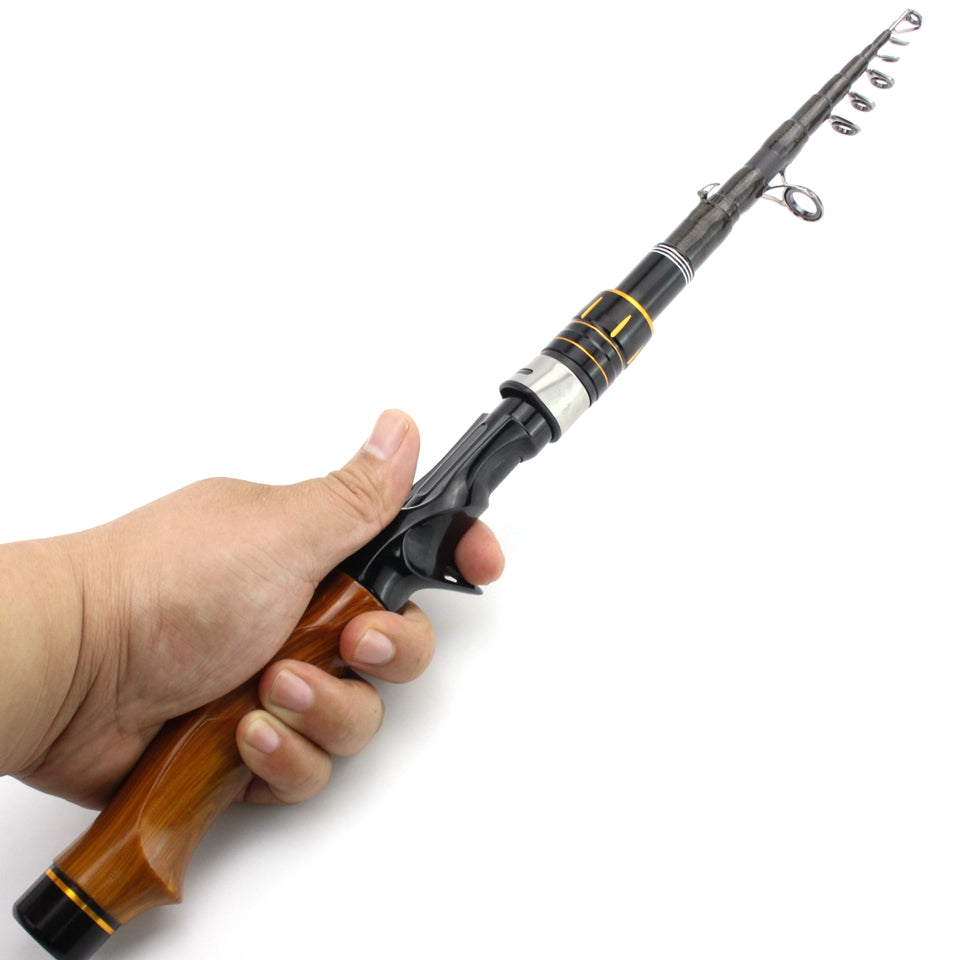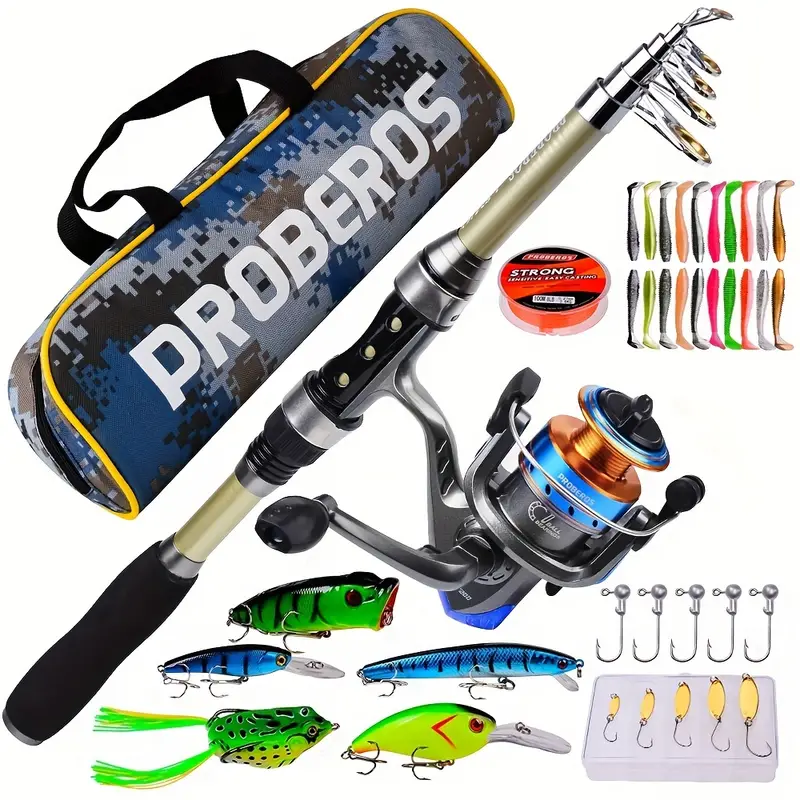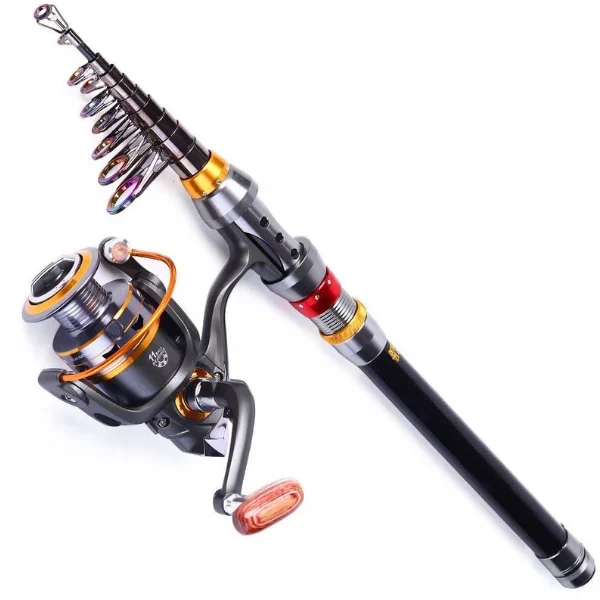Telescopic fishing rods have gained popularity among anglers for their portability and convenience. However, opinions on their performance and durability vary, leading to the question: Are telescopic fishing rods good? This comprehensive guide explores the benefits and drawbacks of telescopic fishing rods, from their design and materials to their suitability for different fishing styles.
The Basics of Telescopic Fishing Rods
Design and Portability
Telescopic fishing rods are designed for easy transportation and storage. They consist of several sections that collapse into each other, making the rod compact when not in use. This collapsible design allows anglers to carry the rod in a backpack or car trunk, making spontaneous fishing trips more feasible. The portability of telescopic rods is particularly beneficial for travelers, hikers, and those with limited storage space. Despite their compact nature, these rods can extend to the length of a traditional fishing rod, providing a similar range and reach.
Ease of Assembly
Another advantage of telescopic fishing rods is their ease of assembly. Setting up a telescopic rod is straightforward, and most models can be extended and locked into place within minutes. This quick setup time is convenient, especially for anglers who want to maximize their fishing time. Additionally, the simplicity of using a telescopic rod makes it accessible for beginners. With no complex assembly required, even those new to fishing can quickly learn how to use a telescopic rod effectively.

Materials and Durability
Common Materials Used
Telescopic fishing rods are typically made from materials like fiberglass, carbon fiber, or a composite of both. Fiberglass rods are known for their durability and flexibility, making them suitable for various fishing conditions. Carbon fiber rods are lighter and more sensitive, providing better feedback and control. Composite rods combine the strengths of both materials, offering a balance of durability and performance. The choice of material can affect the rod’s weight, sensitivity, and overall performance, allowing anglers to select a rod that suits their specific needs.
Strength and Weak Points
While telescopic fishing rods offer many benefits, their durability can be a concern. The multiple sections and joints required for the collapsible design can be potential weak points. These areas are more susceptible to wear and tear, especially with frequent use or heavy loads. However, advancements in materials and construction techniques have improved the strength and durability of modern telescopic rods. Reinforced joints and high-quality materials can enhance the rod’s longevity, making it a viable option for regular use. Proper care and maintenance are also crucial for extending the life of a telescopic fishing rod.
Performance in Different Fishing Styles
Suitability for Freshwater Fishing
Telescopic fishing rods are well-suited for freshwater fishing. Their portability makes them ideal for fishing in lakes, rivers, and ponds where access may require walking or hiking. The versatility of telescopic rods allows them to handle various freshwater species, from small panfish to medium-sized bass. Their ease of use and quick setup make them a convenient choice for casual anglers and those who enjoy spontaneous fishing trips. Additionally, the collapsible design is practical for shore fishing and angling from small boats or kayaks.
Effectiveness in Saltwater Fishing
Using telescopic rods for saltwater fishing is more challenging. Saltwater conditions and larger fish species demand stronger and more durable equipment. While some high-quality telescopic rods are designed for saltwater use, they may not offer the same level of performance and reliability as traditional saltwater rods. The joints and collapsible sections can be susceptible to corrosion and damage from saltwater exposure. Anglers who frequently fish in saltwater environments may prefer traditional rods for their increased durability and robustness. However, for occasional saltwater fishing or travel, a well-made telescopic rod can still be a practical option.

Convenience and Portability
Ideal for Travel
One of the most significant advantages of telescopic fishing rods is their suitability for travel. Their compact size when collapsed makes them easy to pack in luggage or carry-on bags, allowing anglers to bring their gear on trips without hassle. Whether traveling by car, plane, or on foot, the portability of a telescopic rod ensures that fishing opportunities can be seized anywhere. This convenience is especially appealing for adventure travelers and outdoor enthusiasts who want to incorporate fishing into their activities. Having a portable fishing rod on hand opens up endless possibilities for angling in new and exciting locations.
Storage Benefits
Telescopic fishing rods also offer considerable storage benefits. Traditional fishing rods can be cumbersome and require dedicated storage space, which may not be practical for everyone. In contrast, telescopic rods can be easily stored in small spaces, such as closets, car trunks, or even under a bed. This compact storage ability makes them a practical choice for anglers with limited space or those living in urban environments. The convenience of easy storage means that fishing gear can be kept accessible without taking up valuable room.
Comparison with Traditional Fishing Rods
Advantages of Telescopic Rods
Telescopic fishing rods offer several advantages over traditional rods. Their portability and ease of storage are unmatched, making them an excellent choice for travel and spontaneous fishing trips. The quick assembly and user-friendly design make them accessible for beginners and casual anglers. Additionally, advancements in materials and construction have improved the performance and durability of telescopic rods, making them a more viable option for various fishing conditions. The versatility and convenience of telescopic rods provide significant benefits for anglers of all skill levels.
Limitations to Consider
Despite their advantages, telescopic fishing rods also have limitations. The multiple sections and joints can be prone to wear and damage, affecting the rod’s longevity and performance. They may not offer the same level of sensitivity and strength as traditional one-piece rods, especially for heavy-duty or professional fishing. The potential for corrosion and damage from saltwater exposure can further limit their use in saltwater environments. Anglers must weigh these factors when deciding whether a telescopic rod is the best choice for their specific needs.

Tips for Choosing and Maintaining Telescopic Fishing Rods
Selecting the Right Rod
When choosing a telescopic fishing rod, consider factors such as material, length, and action. Determine whether you need a rod for freshwater or saltwater fishing, and select a material that suits your intended use. Carbon fiber rods offer lightweight and sensitivity, while fiberglass provides durability and flexibility. The length of the rod should align with your fishing style and target species. Additionally, check reviews and seek recommendations to ensure you select a high-quality, reliable rod. Paying attention to these factors can help you find a telescopic rod that meets your needs and enhances your fishing experience.
Proper Care and Maintenance
Maintaining a telescopic fishing rod is crucial for ensuring its longevity and performance. After each use, especially in saltwater environments, rinse the rod with fresh water to remove any salt or debris. Allow the rod to dry completely before collapsing it to prevent moisture from getting trapped in the joints. Regularly inspect the rod for any signs of wear or damage, paying close attention to the joints and collapsible sections. Lubricate the joints periodically to ensure smooth operation. Proper care and maintenance can significantly extend the life of your telescopic fishing rod.
Conclusion: Are Telescopic Fishing Rods Worth It?
Weighing the Pros and Cons
In conclusion, telescopic fishing rods offer a blend of convenience and versatility that makes them a valuable option for many anglers. Their portability, ease of storage, and quick setup are significant advantages, especially for travel and spontaneous fishing. The advancements in materials and construction have improved their performance and durability. However, they do have limitations, particularly regarding strength and longevity compared to traditional rods. The potential weak points in the joints and susceptibility to wear are factors to consider. Weighing these pros and cons can help you determine if a telescopic fishing rod is right for your needs.
A Practical Choice for Many Anglers
Telescopic fishing rods are a practical choice for many anglers, especially those who value convenience and portability. They provide an accessible and efficient way to enjoy fishing without the hassle of transporting and storing traditional rods. While they may not replace high-performance traditional rods for heavy-duty fishing, they offer a reliable option for casual and travel-friendly angling. Ultimately, the decision to use a telescopic fishing rod depends on your specific requirements and fishing environment. For many, the benefits of flexible, portable, and user-friendly telescopic rods make them a worthwhile investment.
